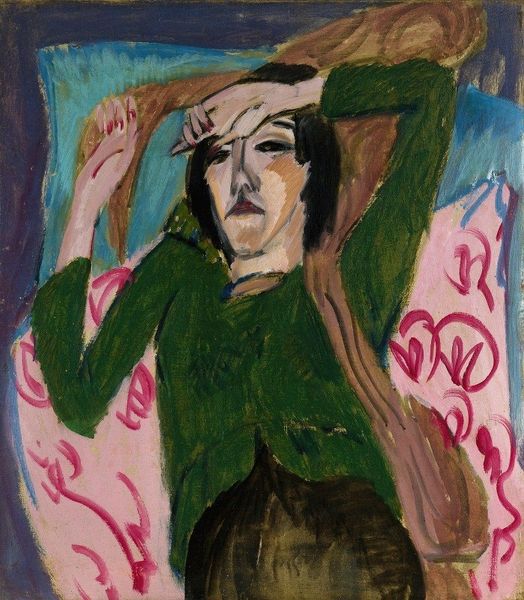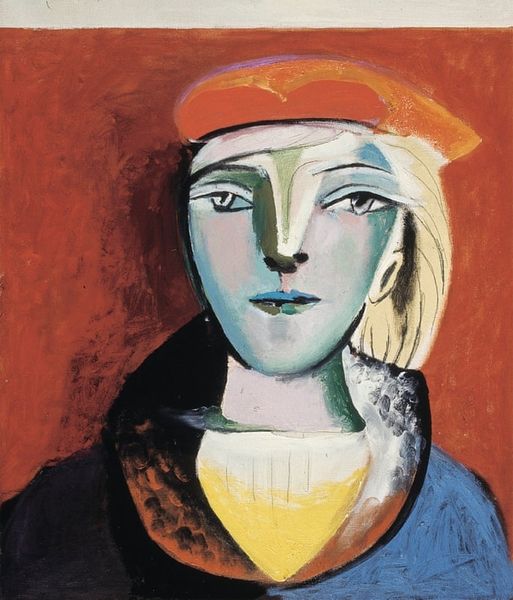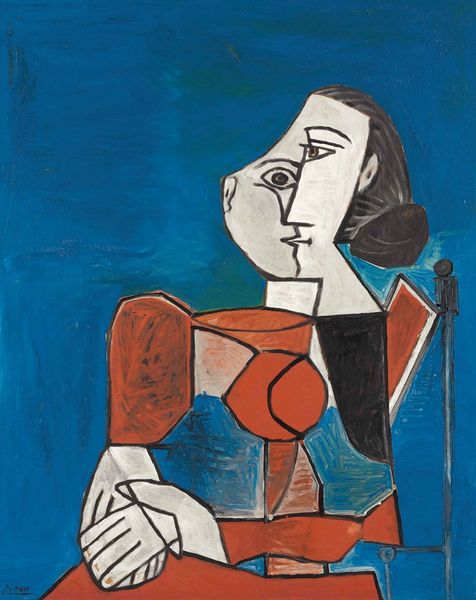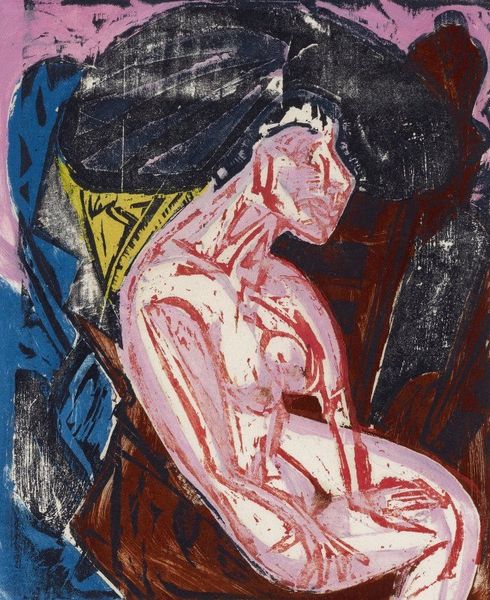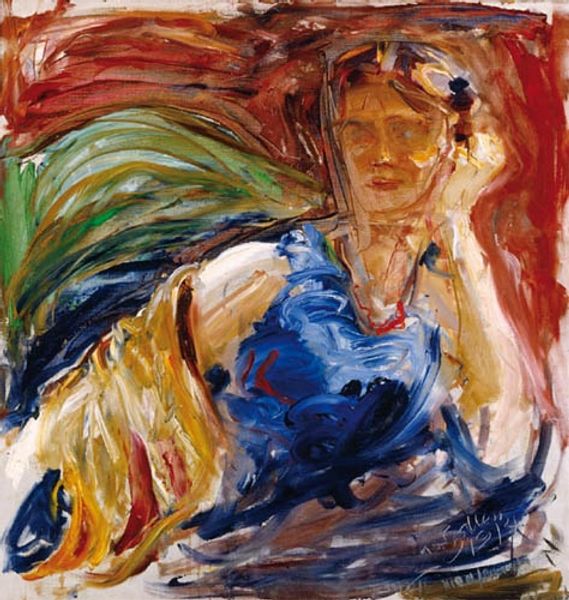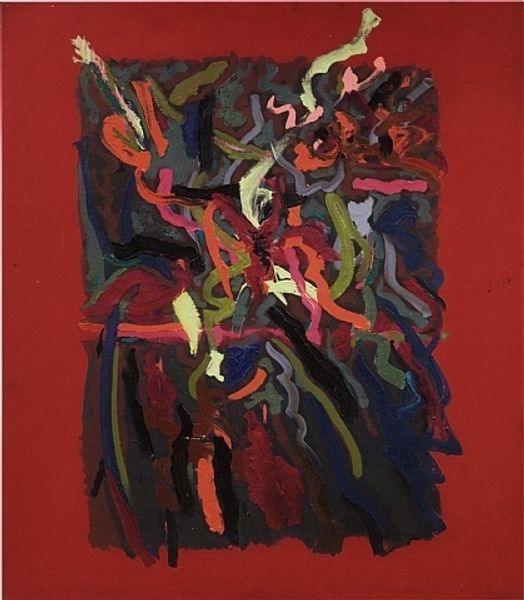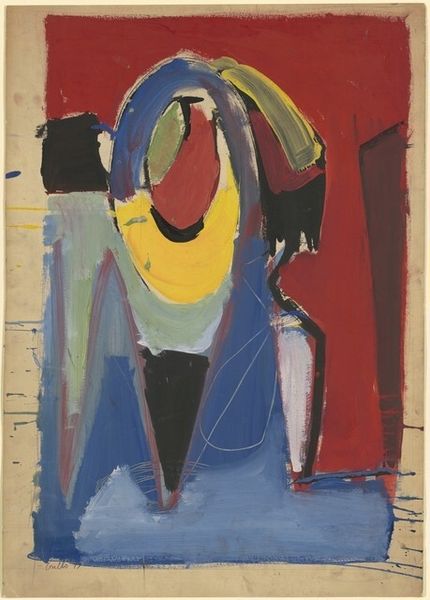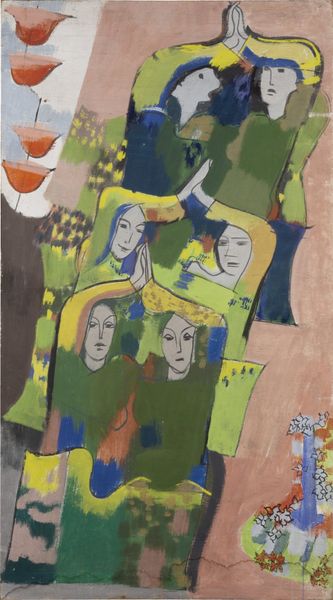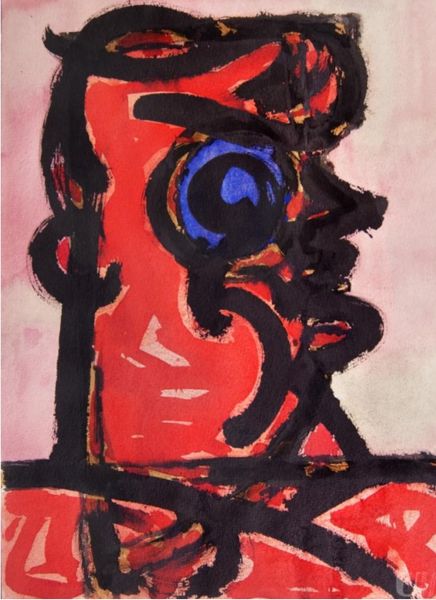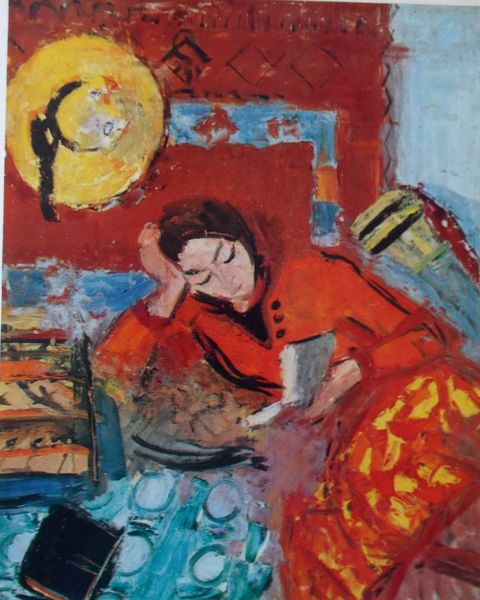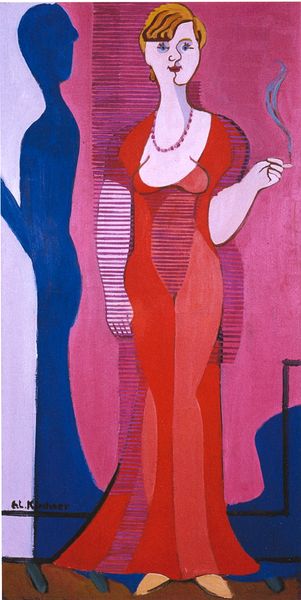
oil-paint
#
portrait
#
oil-paint
#
figuration
#
oil painting
#
neo expressionist
#
expressionism
#
portrait art
#
expressionist
Dimensions: 24.8 x 24.8 cm
Copyright: Public domain
Editor: This is Egon Schiele’s “Portrait of a Woman,” painted in 1912, using oil paint. The colours are striking, especially against that intense red background, and I’m drawn to the almost fragmented way he's depicted the woman’s clothing. What's your perspective on this portrait? Curator: Thank you. Analyzing this work through a formalist lens reveals Schiele's mastery of expressive line and color. Observe how the composition emphasizes the subject’s angularity, particularly in her face and hands. The chromatic tension, particularly between the vibrant, almost clashing hues of red, green and browns, creates a sense of unease or agitation. Editor: I see what you mean about the colours creating tension. Is that tension mirrored anywhere else? Curator: Precisely. The disjointed forms, rendered with bold, decisive strokes, contribute to the overall psychological intensity. Semiotically, these formal elements convey a sense of vulnerability and anxiety, inviting speculation on the artist’s state of mind or perhaps mirroring early 20th-century Austrian society. Editor: So it’s not just about *what* he painted, but *how* he painted it that conveys so much meaning? Curator: Precisely. Formalism redirects us from representational concerns to focus on the intrinsic qualities of the painting itself, examining how colour, line and composition come together to produce meaning. What do *you* make of the heavy outlines? Editor: It really does trap the subject. Thank you, this piece really shows me how line and colour have intention behind them. Curator: My pleasure, by looking at the form we’ve accessed the intention of the artist.
Comments
No comments
Be the first to comment and join the conversation on the ultimate creative platform.
